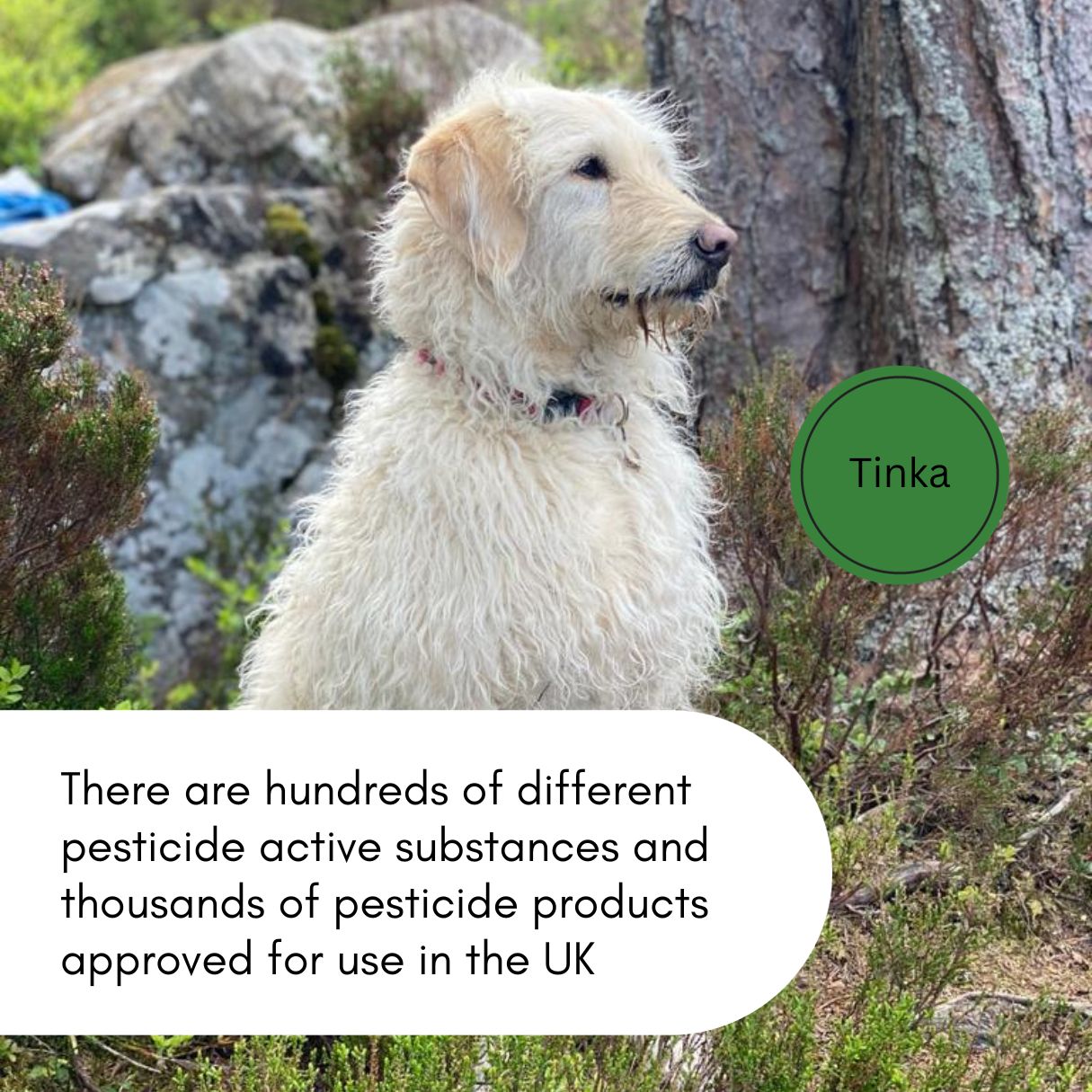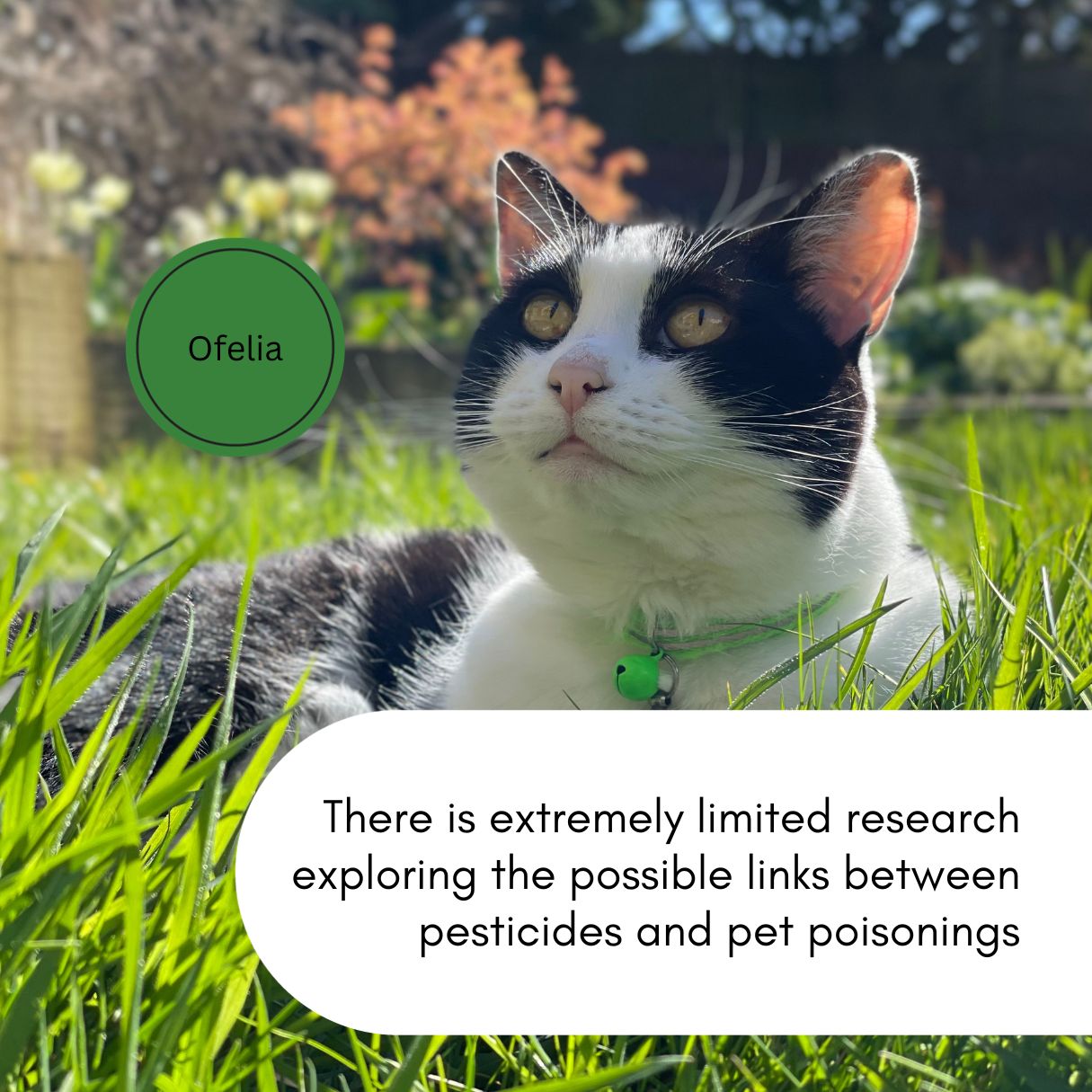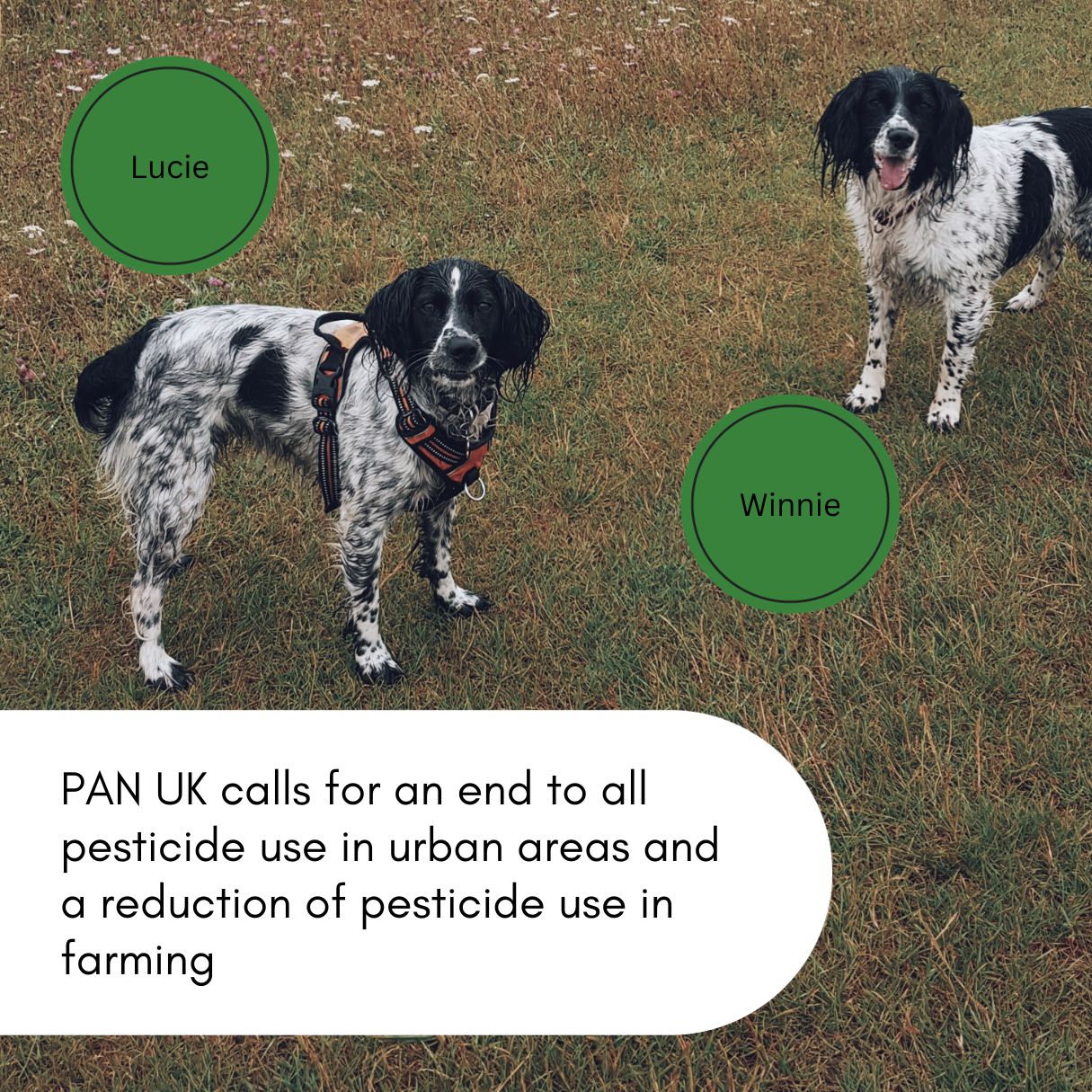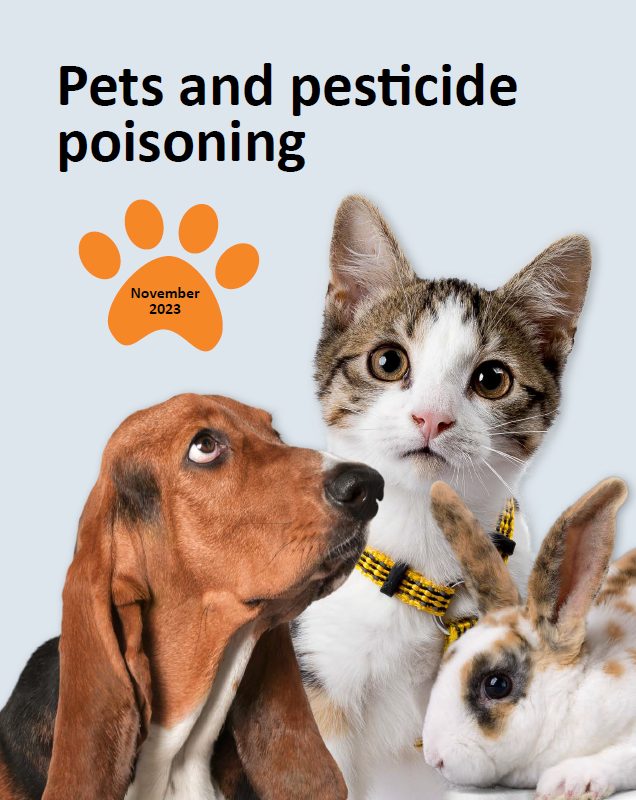Pets and pesticide poisoning
The UK is home to roughly 10 million dogs, 11 million cats and 1 million pet rabbits. More than half of UK adults have at least one pet, and the vast majority take the health of their animals very seriously, collectively spending billions of pounds on veterinary services every year.
As public concern regarding the impacts of pesticides on wildlife and human health has risen in recent years, so too has the worry that our pets are being exposed to a cocktail of pesticides. However, with almost no monitoring of pet poisoning incidents conducted by the government, and very little academic research on the topic, we remain largely in the dark over the extent and true nature of the problem.
The figures we do have – from the Veterinary Poisons Information Service (VPIS) which operates a members-only emergency hotline – show a 55% increase in numbers of pesticide-related poisoning enquiries between 2019 and 2021. However, these figures only reflect the pet poisoning cases reported to VPIS and are therefore likely to be a gross underestimation.

How are pets directly exposed to pesticides?
Pets are exposed to pesticides through a multitude of different routes. In the countryside, pets can be exposed when walking in or near treated crops, potentially absorbing pesticide residues through the pads on their paws. It is also common for pets to eat contaminated grass and drink from puddles, ponds or rivers containing chemicals that have run off agricultural fields.
Towns and cities are not necessarily any safer. The majority of local councils and other land managers use pesticides to manage weeds on pavements, paths, parks, playgrounds and other urban spaces. Land managers are not required to provide any warning, either before or after pesticide application has taken place. It is therefore impossible for pet owners to avoid treated areas and our pets may inadvertently walk, play or lay down on ground that has recently been sprayed. Many home owners also use pesticides to manage ‘pests’ such as weeds, insects, rodents, slugs and snails in their gardens, without knowledge of the harmful effects these may be having on their pets.
Symptoms of pesticide poisoning in pets
Symptoms of acute pesticide poisoning (single incident exposure) in cats and dogs can include vomiting, diarrhoea, drooling, irritation to the skin or eyes, chemical burns, breathing problems, lethargy, disorientation, seizures and even death. While instances of acute pet poisoning are sometimes studied and recorded, there is almost no research on the long-term, chronic effects on pets’ health of regular, ongoing direct exposure to pesticides that have been linked to diseases in humans such as cancer.
There is an ever-growing movement in the UK pushing to reduce pesticide use in order to protect human health and halt biodiversity declines. If we can make the transition away from toxic pesticides and invest in safer and more sustainable alternatives, it won’t just benefit people and wildlife but will also be a big win for the nation’s pets.


Recommendations for change
To prevent pets from being accidentally poisoned by pesticides, PAN UK recommends that:
- The UK Government ends pet poisoning in urban settings and gardens by committing to phasing out the use of all non-agricultural pesticides.
- The UK Government reduces pet poisoning in rural settings by introducing ambitious pesticide reduction targets and a comprehensive package of support to help UK farmers transition over to safer and more sustainable non-chemical alternatives.
- Local councils and land managers give the public advance notice of spray schedules and communicate clearly (via physical signage) when an area has recently been treated with pesticides so that pet owners can avoid exposure.
- Pet owners do not use pesticide products in their homes or gardens and ensure that containers of pesticides are stored safely and securely in a place which cannot be accessed by pets.
- Farmers do not apply pesticides near paths or buildings or when weather conditions are poor and that they put up signs to notify passers-by when spraying is likely to happen and when it has recently taken place.
A ban needed on five pesticides
While conducting the research for this report, PAN UK discovered that five pesticides that are not permitted for use on agricultural crops due to their impact on human health and/or the environment are being used widely in tick and flea treatments for dogs and cats. These chemicals are leaching into England’s rivers, posing a risk to aquatic species. Two of the five chemicals are known to contaminate water and all five are highly bee toxic – including three neonicotinoids which are notorious for driving declines in global bee populations. Two of the five are suspected endocrine disrupters and have links to cancer.
PAN UK and its allies are calling for a ban on all pesticides that are not permitted for use on agricultural crops from being included in veterinary medicines for dogs and cats. We are also asking the UK government to close the current loophole to ensure that any pesticide active substance deemed to be too harmful to be used on crops in the future is automatically banned from appearing in veterinary medicines.
Further reading
Find out more about pesticides in veterinary medicines here.
Find out more about the organisations supporting a ban on pesticides used in veterinary medicines but not permitted for use on UK crops here.
Please let PAN UK know if you think your pet has been poisoned by pesticides so that we can monitor the national picture and continue to build the case for change. Our pet poisoning reporting form is available here.

